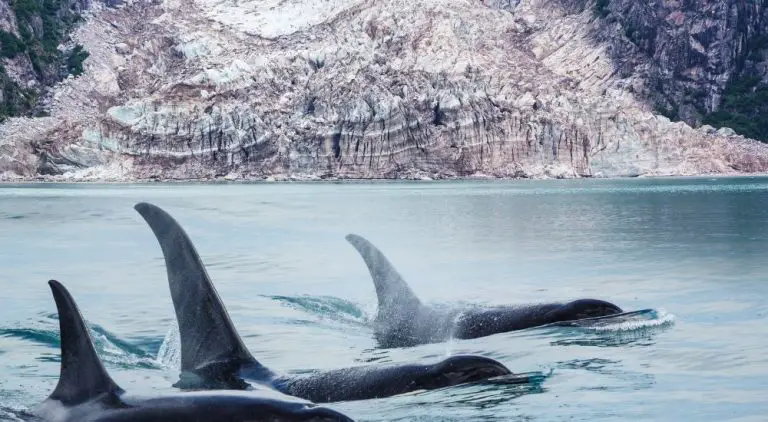Why Is Alaska So Dangerous: Understanding the Risks and Hazards
Alaska, the largest state in the United States, is known for its stunning natural beauty and rugged wilderness. However, it is also known for being one of the most dangerous states in the country. With a high rate of violent crime, traffic accidents, and natural disasters, Alaska poses a unique set of challenges for its residents and visitors.

One reason why Alaska is so dangerous is due to its remote location and harsh climate. Many communities in Alaska are only accessible by plane or boat, making it difficult for law enforcement and emergency responders to quickly reach those in need. In addition, Alaska’s extreme weather conditions, such as snowstorms and avalanches, can make travel treacherous and increase the risk of accidents.
Another factor contributing to Alaska’s danger is its high rate of violent crime. According to data from the FBI, Alaska consistently ranks among the top states for violent crime, including homicide, rape, and assault. Many of these crimes go unsolved due to the vastness of the state and the lack of law enforcement resources in some areas.
Environmental Hazards

Alaska is known for its extreme environmental hazards, which can prove to be dangerous for even the most experienced of adventurers. The state’s unique geography and climate make it susceptible to a wide range of natural disasters and hazards. This section will explore some of the most significant environmental hazards in Alaska and provide insight into how to stay safe in these situations.
Extreme Weather Conditions
Alaska is known for its harsh and unpredictable weather conditions. The state experiences long, cold winters with temperatures often dropping below freezing. In addition, the state also experiences heavy snowfall, strong winds, and frequent snowstorms. These weather conditions can cause significant problems for travelers, especially those who are unprepared.
Challenging Terrain and Remote Locations
Another significant environmental hazard in Alaska is the challenging terrain and remote locations. The state is known for its rugged terrain, which can make travel difficult and dangerous. In addition, many areas of Alaska are remote and difficult to access, making it challenging to receive help in the event of an emergency.
Wildlife Encounters
Alaska is home to a wide range of wildlife, including bears, moose, and wolves. While these animals are beautiful to observe from a distance, they can be dangerous when encountered up close. Travelers need to be aware of the risks associated with wildlife encounters and take precautions to avoid them.
In addition to the hazards mentioned above, Alaska is also susceptible to avalanches, earthquakes, and dangerous roads. Travelers need to be aware of these hazards and take precautions to stay safe. It is crucial to be prepared for the unexpected when traveling in Alaska, as the state’s environment can be unpredictable and dangerous.
Overall, it is essential to be prepared and take precautions when traveling in Alaska. Travelers should research the area they plan to visit and be aware of the hazards associated with that location. They should also pack appropriate gear and clothing and be prepared for the unexpected. By taking these precautions, travelers can enjoy the beauty of Alaska while staying safe and avoiding potential hazards.
Societal and Crime-Related Issues

High Crime Rates in Certain Areas
Alaska is known for its breathtaking natural beauty and abundant wildlife, but it also has a reputation for being one of the most dangerous places in the United States. According to FBI data, Alaska has one of the highest violent crime rates in the country, with a rate of 603.2 violent crimes per 100,000 people. This is significantly higher than the national average of 386.9 violent crimes per 100,000 people.
The high crime rate in Alaska is not evenly distributed throughout the state. Certain areas, such as Anchorage and Juneau, have higher crime rates than others. In fact, Anchorage is often considered one of the most dangerous cities in America. Property crimes, assault, and robbery are common in these areas, and residents are advised to take precautions to protect themselves and their property.
Limited Law Enforcement Resources
One of the main reasons for the high crime rate in Alaska is the limited law enforcement resources in the state. Alaska is the largest state in the country, with a population of just over 700,000 people. This means that there are vast areas of the state that are sparsely populated and difficult to reach. In remote areas, police presence is limited, and it can take hours or even days for law enforcement to respond to a call.
The Alaska State Troopers are responsible for law enforcement in much of the state, but they face many obstacles in carrying out their duties. They have to cover vast areas of land with limited resources, and they often have to deal with dangerous roads and extreme weather conditions. In addition, the state’s funding for law enforcement is limited, which makes it difficult for the troopers to hire and retain enough officers.
Substance Abuse and Its Consequences
Another factor that contributes to the high crime rate in Alaska is substance abuse. Alcoholism and drug abuse are major problems in the state, particularly in remote Alaskan communities. Substance abuse can lead to violent behavior, domestic violence, and sexual assault. Native Alaskans are particularly vulnerable to these issues, and Native American women are more likely to be victims of sexual assault than any other group in the United States.
In recent years, the state has taken steps to address substance abuse and its consequences. The Alaska State Troopers have partnered with local communities to provide education and resources to combat drug and alcohol abuse. The state has also increased funding for treatment programs and support for Native American families affected by substance abuse.
Overall, the high crime rate in Alaska is a complex issue with no easy solutions. While law enforcement agencies and community leaders are working to address the problem, there are still many obstacles to overcome. By addressing the root causes of crime in the state, such as limited law enforcement resources and substance abuse, Alaska can work towards creating a safer and more secure environment for its residents.
Frequently Asked Questions

What factors contribute to the high crime rate in Alaska?
There are several factors that contribute to the high crime rate in Alaska. One of the main reasons is the state’s remote location, which makes it difficult for law enforcement to patrol the vast wilderness. Additionally, Alaska has a high rate of drug and alcohol abuse, which often leads to violent crime. The state also has a large population of transient workers who are often involved in criminal activity.
How does the crime rate in Alaska compare to other states?
Alaska has one of the highest crime rates in the United States. According to the FBI’s Uniform Crime Report, Alaska had the highest violent crime rate in the country in 2019. The state also has a high property crime rate, which includes theft, burglary, and motor vehicle theft.
What are the most common crimes committed in Alaska?
The most common crimes committed in Alaska are property crimes, such as theft and burglary. Violent crimes, including assault and homicide, are also a significant problem in the state. Drug-related crimes are also prevalent in Alaska, particularly in urban areas.
What makes Anchorage a city with a notable crime rate?
Anchorage, the largest city in Alaska, has a notable crime rate due to its high population density and large transient population. The city also has a significant drug problem, which contributes to the high crime rate. Additionally, Anchorage has a large homeless population, which can lead to criminal activity.
What are the safety concerns in Fairbanks?
Fairbanks, like many other cities in Alaska, has a high crime rate. The city’s remote location and harsh weather conditions make it difficult for law enforcement to patrol the area effectively. Additionally, Fairbanks has a significant drug problem, which contributes to the high crime rate.
How does the cost of living in Alaska relate to its crime and safety?
The high cost of living in Alaska can contribute to criminal activity, as some individuals may turn to illegal means to make ends meet. Additionally, the state’s remote location and harsh weather conditions can make it difficult for law enforcement to effectively combat crime. However, it’s important to note that the cost of living is just one factor that contributes to crime and safety in Alaska.






